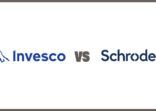The interest toward European equities was evident among delegates who attended Fund Selector Asia’s income forum in February.
Furthermore, a recent survey by the Hong Kong Investment Fund Association also showed a significant number of managers have turned positive toward European markets.
Other factors are in play as well. The depreciation of the euro against the dollar is providing a tailwind for European exporting companies.
Should companies start showing an improvement in earnings, dividends are expected to grow, according to managers such as Pioneer Investments.
Against this backdrop, FSA takes a look at two European equity income products: the BlackRock Global Funds European Equity Income and the Invesco Pan European Equity Income.
The BlackRock fund was launched in December 2010 and had €2.4bn ($2.6bn) in assets under management on 28 February. The Invesco fund has been in operation since October 2006 and manages €78.8m ($84.9m) in AUM.
Despite a relatively short track record, the BlackRock fund is larger than the Invesco fund.
“I believe this is more a reflection of the brand name and wider distribution network of the BlackRock fund rather than the performance. You will see in the performance review that they do not differ much,” said Ryan Sim, head of investments, global wealth management at OCBC Bank, who provides a comparative analysis.
Investment strategy review
Large-cap companies accounted for nearly 80% of the BlackRock fund’s assets. In comparison, the Invesco fund has about 77% weighting toward large-cap companies.
While both funds are large-cap focused, their investment style differs.
The BlackRock fund has a bias to value stocks while the Invesco fund has a blend of growth and value stocks, said Sim, citing Morningstar data.
The BlackRock fund, despite being larger in AUM, holds a highly-concentrated portfolio of 44 stocks. By comparison, the Invesco fund has 67 holdings, Sim said, citing a report from Morningstar.
The top 10 holdings of the BlackRock fund account for nearly 31% of the portfolio. On the other hand, the 10 largest holdings of the Invesco fund account for about 23% of its assets.
“This signifies the high level of conviction in the stock ideas that the BlackRock team produces.”
The sector composition of the two funds differ, as do the weightings, but the geographic exposure is similar, as shown in portfolio allocation table below:
|
Particulars |
BlackRock fund |
Invesco fund |
|
Assets under management |
€2.4bn ($2.6bn) |
€78.8m ($84.9m) |
|
Top sectors |
Financial 31.2% Utility 13.6% Telecommunications 12.7% |
Financial 29.0% Industrial 20.3% Cons. Discretionary 11.6% |
|
Top geographies |
United Kingdom 34.2% Switzerland 14.9% France 10.8% |
United Kingdom 29.9% Switzerland 15.0% France 13.0% |
|
Top holdings |
Royal Dutch Shell 3.4% AXA 3.2% Endesa 3.2% |
Novartis 3.7% Intesa Sanpaolo 2.4% ReedElsevier 2.4% |
|
Top 10 holdings |
Nearly 31% of portfolio |
Nearly 23% of portfolio |
Performance review

“Looking at the cumulative performance on 28 February, the BlackRock fund has outperformed the index and the Invesco fund in the nearer term [one-month, three-month, and one-year period until 28 February], while the Invesco fund has delivered slightly better returns over a three-year period.”

Source: Morningstar
A different picture emerges in terms of calendar year returns.
The BlackRock fund underperformed the Invesco fund during the positive market periods in 2012 and 2013. Only during the positive market period in 2014 did the BlackRock fund perform better than the Invesco fund.

Source: Morningstar
Something worthwhile to note is that the BlackRock fund outperformed during 2011 when the market declined.
“We assume that the BlackRock fund had a more defensive portfolio positioning relative to the Invesco fund, given that it outperformed during down years and underperformed during positive [market] periods.

Source: Morningstar
“It is evident from the [the standard deviation] chart that the BlackRock fund is more volatile relative to both the Invesco fund and the MSCI Europe Index.”
“This is somewhat contrary to the general perception that dividend-yielding funds tend to be lower in volatility. The Invesco fund, on the other hand, has shown consistency.”
Manager review

Alice Gaskell has been managing the BlackRock fund since December 2010. Gaskell is the managing director and portfolio manager of BlackRock’s European equity style diversified team.
Andreas Zoellinger has also been co-managing the fund since March 2012. Zoellinger is director and assistant portfolio manager of the European equity team.
Both Gaskell and Zoellinger also manage the BlackRock Global Funds Euro Markets and the BlackRock Continental European Income vehicles.

The Invesco fund manager has been Stephanie Butcher since December 2010. James Goldstone joined Butcher to co-manage the fund in May 2014.

Butcher has also been managing other European funds at Invesco, namely the Invesco Perpetual European Equity Income, the Invesco Perpetual European High Income, the Invesco Continental European Equity and the Invesco Pan European High Income.
Fees

Both funds charge an initial investment fee of 5%. However, the total expense ratio (TER) of the BlackRock fund is higher.
The TER for the BlackRock fund was 1.83% for the year ended 30 August. The TER for the Invesco fund was 1.75%.
Conclusion

According to Sim, an Invesco team advantage is that they have the experience of managing the fund through the tough period following the 2008 financial crisis and that may instill a dgree of confidence in some investors.
“Investors who are looking for a fund with a lower volatility and longer track record, especially one that has navigated through the global financial crisis, may like the Invesco Pan European Equity Income Fund.”
“The BlackRock fund would suit those investors who are attracted to strong performance in the short-term,” he added.
















